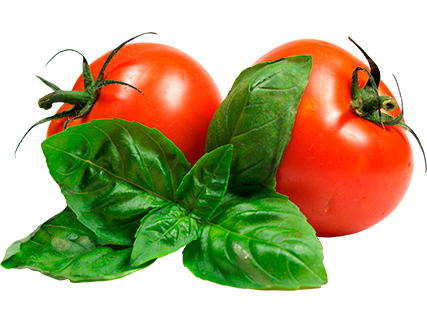Mangifera Indica. Mangga. The King of Fruits. Whatever you call ‘em one thing’s for sure: mangoes have earned their status as the world’s most popular fruit! Read on to learn about the history of mango cultivation, how mangoes are enjoyed around the world, and the future of mango consumption in the United States.
The History of Mangoes
A member of the cashew family, mangoes are a kidney-shaped tropical fruit with waxy skin and sweet, often fibrous, flesh. It’s believed that mangoes originated some 5,000 years ago in India, where it was considered “sacred” and used for food, textiles, art and more.
Over time, as Indians traversed the globe with the mango’s large center-seed in tow, mangoes spread throughout Asia, the Middle East, and East Africa. In the 16th century, mangoes arrived in the Americas by way of the Portuguese, who introduced them to Brazil. By the early 19th century, mangoes gained firm ground in Mexico and the United States. Early varieties, which are still popular today include Haden, Kent, and Tommy Atkins.
While at one time considered “exotic”, mangoes can be found in most restaurants and supermarkets across the United States. In Asia, where 75% of all mangoes are grown, mangoes are considered “the king of fruits”.
What are some popular mango varieties around the world?
Worldwide, there are hundreds of mango varieties. Depending on the variety, mangoes may wildly differ in terms of size, shape, sweetness, skin color and flesh color. In India alone, it’s estimated that there are over 1,000 commercial varieties of mango. The Alphonso Mango, India’s most popular varietal, has a distinctive red tinge at the top of the fruit, a rich, creamy taste and fibreless flesh. Cultivated in the Philippines, which is the sixth largest mango producer in the world, the Manila Mango is another well-known variety. The Manila Mango has a distinctly yellow coloring, buttery texture and sweet, rich flavor. The Mexican Honey mango, another prized mango variety, is an “offshoot” of the Manila mango.
Haden and Kent varieties are grown in Mexico, Ecuador and Peru, and share similar characteristics with one another such as tender, juicy flesh and a peachy aroma. Originating in Florida, the Tommy Atkins mango comprises about 80% of the mangoes sold in the United States and United Kingdom. Although not generally considered the best mango variety in terms of sweetness and flavor, the Tommy Atkins is valued for its long shelf life and tolerance for transportation and handling.
What are health benefits of mangoes?
Mangoes don’t just taste delicious – they’re nutritious, too. According to the USDA, 1 cup of chopped mango contains just 99 calories and around 3 grams of fiber, doing double-duty as a filling and heart-healthy option. Mangoes provide other outstanding health benefits:
How are mangoes enjoyed by different groups?
Mangoes are a versatile fruit that taste delicious in many different preparations! Not only are they good raw, they’re also excellent when added to salads, drinks, condiments and more. Worldwide, mangoes are enjoyed in a variety of ways.
In India, mango lassi is a popular cold drink that combines mango, yogurt, milk, sugar and cardamom. In Thailand, mango sticky rice – a dessert made with fresh mangoes and sticky rice sweetened with coconut milk – is a staple on many restaurant menus. Mangonada, a frozen mango treat consisting of mango chunks, ice, Tajin and chamoy, is also a summertime staple in Mexico.
In other parts of Asia, savory mango dishes are as ubiquitous as sweet ones. In the Philippines, slices of unripe green mango are eaten with bagoong, or fermented shrimp paste. Westward towards Vietnam, green mangoes are julienned and tossed with cooked shrimp, mint leaves, peanuts and nuoc cham.
In the West, mangoes are frequently eaten dried, in mango salsa, or added to shakes and smoothies. They’re also largely consumed raw, and are sold in many grocery stores pre-cut and packaged for convenience.
The Future of Mangoes: Maglio Mango Cheeks
The 2020 pandemic has ushered in a new era of health-consciousness in the United States, and many companies, including our own, have answered the call. Maglio Mango Cheeks launched in September of 2021 and are set to revolutionize the way Americans enjoy mangoes.
Maglio Mango Cheeks are mangoes which have been cut in half, de-pitted, proprietary-processed to extend shelf life, and individually wrapped for convenience. They’re convenient for busy families and “just the right size” for anyone living solo or with roommates. Within food service, they’ll be a gamechanger: pre-portioned cuts ensure labor savings and efficiency. Most importantly, they taste great, highlighting everything folks have loved about mangoes for thousands of years without the hassle of having to peel, cut and destone one!

| Cookie | Duration | Description |
|---|---|---|
| cookielawinfo-checkbox-analytics | 11 months | This cookie is set by GDPR Cookie Consent plugin. The cookie is used to store the user consent for the cookies in the category "Analytics". |
| cookielawinfo-checkbox-functional | 11 months | The cookie is set by GDPR cookie consent to record the user consent for the cookies in the category "Functional". |
| cookielawinfo-checkbox-necessary | 11 months | This cookie is set by GDPR Cookie Consent plugin. The cookies is used to store the user consent for the cookies in the category "Necessary". |
| cookielawinfo-checkbox-others | 11 months | This cookie is set by GDPR Cookie Consent plugin. The cookie is used to store the user consent for the cookies in the category "Other. |
| cookielawinfo-checkbox-performance | 11 months | This cookie is set by GDPR Cookie Consent plugin. The cookie is used to store the user consent for the cookies in the category "Performance". |
| viewed_cookie_policy | 11 months | The cookie is set by the GDPR Cookie Consent plugin and is used to store whether or not user has consented to the use of cookies. It does not store any personal data. |
